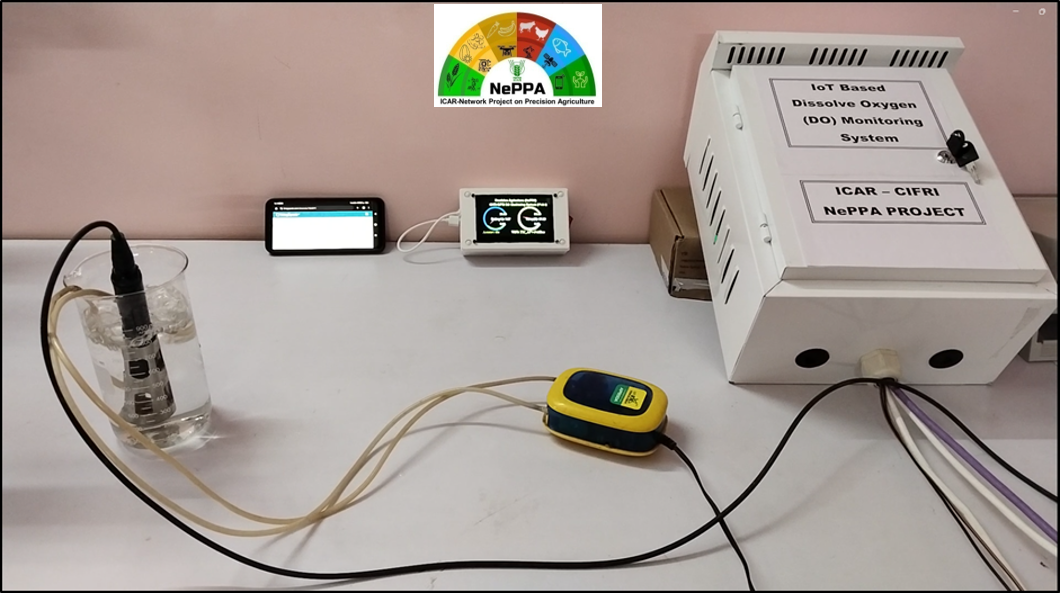
- Home
- About Us
- What We Do
- Partners
- ICAR-Indian Agricultural Research Institute, New Delhi
- ICAR-Indian Agricultural Statistics Research Institute, New Delhi (IASRI)
- ICAR-National Rice Research Institute, Cuttack (NRRI)
- ICAR-Indian Institute of Wheat and Barley Research, Karnal (IIWBR)
- ICAR-Central Institute of Cotton Research, Nagpur (CICR)
- ICAR-Indian Institute of Vegetable Research, Varanasi (IIVR)
- ICAR-National Research Centre on Banana (NRCB)
- ICAR-Indian Institute of Soil Science, Bhopal (IISS)
- ICAR- National Bureau of Soil Survey and Land Use Planning, Nagpur (NBSS&LUP)
- ICAR-Indian Institute of Water Management, Bhubaneshwar (IIWM)
- ICAR-Central Institute of Agricultural Engineering, Bhopal (CIAE)
- ICAR- Central Institute of Post-Harvest Engineering and Technology, Ludhiana (CIPHET)
- ICAR-National Dairy Research Institute, Karnal (NDRI)
- ICAR-Central Institute of Fisheries Education, Mumbai (CIFE)
- ICAR- Central Inland Fishery Research Institute, Barrakpore (CIFRI)
- ICAR- Central Institute of Fresh Aquaculture, Bhubaneswar (CIFA)
- Tools / Web Services
- Publications
- Gallery
- Committee
- Contact Us
Achievements
ICAR-Central Inland Fisheries Research Institute
IoT based Dissolved Oxygen (DO) Monitoring System
In recent years, with advancement in monitoring and automation technology, research in aquaculture resulted in development of technologies that can improve the water quality of the fish farming ponds or water bodies, thus leading to increase in fish production. Changes in water quality can happen very quickly and at any time, so monitoring water in real-time with alerts can help not to miss any particular event. In recent years, aquaculture and sensor-based water quality monitoring have exponentially grown in the world but, combination of both domains still remains at its early stage.
Sensors are particularly vital in systems where water is recirculated and where stocking levels are high, but they are generally expensive, low limits of detection, high maintenance requirements and are often difficult to connect to the IoT world. Hence, an integrated automated system is necessary which will simultaneously identify the real issue and initiate appropriate management steps in real time to address the problem. To address this issue, an attempt has been made to develop an automated system which will simultaneously measure the dissolved oxygen in water and operate the aerator automatically in case of low dissolved oxygen level to manage the stress condition. With this objective, IoT based DO Monitoring System device has been developed for real time monitoring of DO level of fish tank from any location.
- The developed device is IoT enabled and connected to the cloud system.
- The device captures the readings of DO sensor and uploaded in the cloud database every 5 minute.
- User can monitor the real time DO level as well as temperature of the fish tank in PC or mobile from any location.
- The continuous date wise DO and temperature data are stored in the excel file for further analysis.
- The system automatically starts the aerator when DO level of the waterbody goes below the threshold level.
Features
- It can be monitored from remotely.
- 24 x 7 Data can be monitored.
- It reduces the energy consumption as the aerator is turned only when it is required that is whenever there is a drop of DO level.
- Almost no manual interpretation is required.
- The operation of aerator is independent of Internet connectivity.

Drone based water sampling in Inland open waterbodies
Inland waters of every developed and developing country receive lots of inflow containing water pollutants. Monitoring of the pollutants and the other physico-chemical parameters in the inland waters is very much important in view of sustaining the natural aquatic biodiversity and ultimately human health. Regular sampling and monitoring of water quality in the vast aquatic systems including rivers, wetlands and reservoirs especially in ecologically diverse countries like India is very challenging. In general, monitoring of the water resources was done through manual sampling of water from the designated sites. The process is cumbersome, lengthy and requires huge cost. Sometime the sampling could not be done due to unavailability of boat or any other suitable vehicle.
To address this issue, ICAR-CIFRI has conceptualized and developed a water sampling solution using UAV (Unmanned aerial Vehicle) system which is capable of collecting water sample in any part of the large water bodies (within line of site).
The developed approach will help to determine the basic water quality parameters and sources of emerging contaminants especially in difficult and unreachable aquatic sites. The generated information would be useful by different regulation agencies including aquatic health monitoring agencies to create awareness regarding harmful effect of different contaminants against aquatic biodiversity and ultimately to public health.
Drone based water sampling

Estimation of macrophyte coverage area of wetlands using RGB sensor mounted on aerial drone
The change in water quality due to pollution or high infestation of macrophytes may deteriorate aquatic life as well as its primary productivity. Moreover, with the increasing water pollution, degradation of water quality had caused widespread concern in the society. An attempt has been taken to identify and estimate the macrophyte coverage area of wetlands using aerial drone with RGB sensors. Five wetlands of West Bengal were surveyed and captured the RGB images of the water area using aerial drone mounted with RGB camera in December, 2022. The macrophytes area were then identified and delineated based on visual interpretation for its coverage area estimation. The RGB sensors are less costly than multispectral sensors.
The applications of drone based high resolution RGB images may serve as an affordable solution to monitor the realtime macrophytes area in large open waterbodies like rivers, wetlands and reservoirs and plan the probable management strategies in effective manner.

Estimated Macrophyte coverage area of wetlands using aerial drone
Fish monitoring in Cages using Under Water Drone
Applications:
- Fish health monitoring through
Fish behavioral study
Fish disease identification
- Fish species identification
- Cage net monitoring
